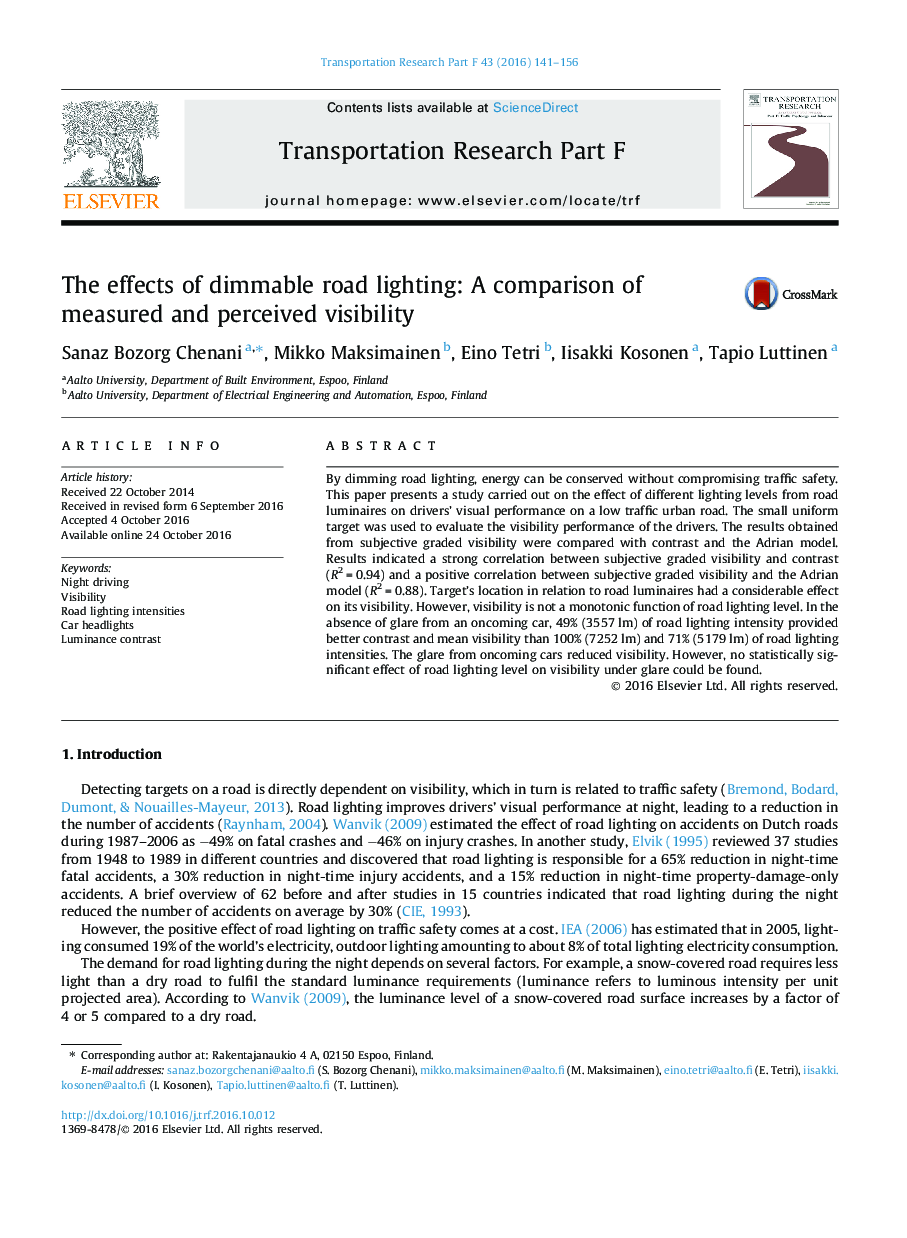| کد مقاله | کد نشریه | سال انتشار | مقاله انگلیسی | نسخه تمام متن |
|---|---|---|---|---|
| 5037480 | 1472442 | 2016 | 16 صفحه PDF | دانلود رایگان |
- Car headlights and road lighting have an important effect on traffic safety and energy saving.
- Detection of targets at night on a road depends mainly on the contrast between the target and its background.
- Visibility of targets varies significantly due to the position of targets on the road.
- With low beam car headlights, 49% of road lighting intensity provided better contrast and mean visibility than 100% and 71% of road lighting intensities.
- Glare from oncoming cars significantly reduces visibility. In the presence of glare, different road lighting intensities do not have a significant effect on visibility.
By dimming road lighting, energy can be conserved without compromising traffic safety. This paper presents a study carried out on the effect of different lighting levels from road luminaires on drivers' visual performance on a low traffic urban road. The small uniform target was used to evaluate the visibility performance of the drivers. The results obtained from subjective graded visibility were compared with contrast and the Adrian model. Results indicated a strong correlation between subjective graded visibility and contrast (R2Â =Â 0.94) and a positive correlation between subjective graded visibility and the Adrian model (R2Â =Â 0.88). Target's location in relation to road luminaires had a considerable effect on its visibility. However, visibility is not a monotonic function of road lighting level. In the absence of glare from an oncoming car, 49% (3557Â lm) of road lighting intensity provided better contrast and mean visibility than 100% (7252Â lm) and 71% (5179Â lm) of road lighting intensities. The glare from oncoming cars reduced visibility. However, no statistically significant effect of road lighting level on visibility under glare could be found.
Journal: Transportation Research Part F: Traffic Psychology and Behaviour - Volume 43, November 2016, Pages 141-156
